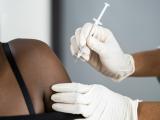Dec 28, 2011
Early case identification, isolation may have helped contain Ebola outbreak
Response to an outbreak of Ebola hemorrhagic fever (EHF) in Uganda in 2000 showed the value of early diagnosis, isolation, and quarantine, as well as the risk to healthcare workers (HCWs), according to a retrospective study today in BMC Infectious Diseases. An international team of researchers analyzed surveillance records, hospital statistics, and observational data surrounding an outbreak in Masindi, a town of about 25,000 people. They identified 26 EHF cases—24 lab confirmed and 2 probable—that occurred from Oct 21 to Dec 22, 2000. Case-patients comprised the index case (a woman in her 60s), 18 of her extended family contacts, 6 HCWs, and 1 household contact of an HCW. Of the 26 who were infected, 18 died, for a case-fatality rate (CFR) of 69%. All except the first three cases were treated in an isolation Ebola ward at a local hospital. CFR was particularly high (76%; 13/17) before the hospital staff was reinforced on Dec 7 with HCWs experienced in EHF control measures. Five of the six HCW cases occurred after barrier nursing was instituted but were likely caused by protocol breaches, according to the authors, which "points at the need to strengthen training and supervision of local HCWs." The authors also highlight the struggles of overcoming fear in the community, which ironically led to neighbor-initiated quarantine of the affected extended family and ultimately may have helped control outbreak spread.
Dec 28 BMC Infect Dis abstract
Death from new Ebola species not linked to inflammatory cytokines
Disease severity caused by the recently identified Bundibugyo species of Ebola virus apparently is not caused by a flood of inflammatory cytokines that results in multiorgan failure and septic shock as is the case with other Ebola viruses, according to a study in Virology. Scientists from the US Centers for Disease Control and Prevention (CDC) used Luminex assays on 44 patient samples. They found fatal infection to be associated with high levels of viral antigen, low levels of pro-inflammatory cytokines, and high levels of immunosuppressor cytokines such as IL-10. They also found that patients died in spite of generating high levels of antibodies against the new species. Bundibugyo Ebola virus was first identified in an outbreak in Uganda in November 2007. A report a year ago in the CDC's Emerging Infectious Diseases journal said the species has a CFR of about 40%, compared with 50% to 90% with other Ebola viruses.
Dec 23 Virology abstract
Nov 21, 2008, CIDRAP News story on the new species
December 2010 Emerg Infect Dis report
Bangladesh confirms H5N1 poultry outbreak
Officials culled more than 3,000 poultry and destroyed 1,300 eggs at a farm in Meherpur, Bangladesh, after confirmation of H5N1 avian flu, according to Dhaka-based The Daily Star. The owner of Sajan Poultry first noticed dying chickens on Dec 24, the story said, adding that "scores" of poultry died since then. A lab in Dhaka confirmed H5N1 on Dec 26. No other area farms appear to be affected.
In related news, Chinese authorities have suspended all live poultry imports from mainland China to Hong Kong after H5N1 was detected in Hong Kong early last week, its state-run news service, Xinhua, reported. The ban, issued by the General Administration of Quality Supervision, Inspection and Quarantine on Dec 21, is designed to last 21 days.
Dec 22 Xinhua article
Study finds contact tracing of H1N1 plane passengers not effective
Tracing those exposed to airline passengers sick with 2009 H1N1 pandemic flu (pH1N1) was not timely enough to allow optimal postexposure prophylaxis in the Netherlands, according to a study by Dutch investigators. They analyzed 21 requests for contact tracing after an on-flight case of pH1N1 flu was identified and found that the average time to obtain contact details for 17 of those flights was 3.9 days (range, 2-7). (It took longer than 7 days to contact the passengers of the other four flights.) That range would place most passengers outside the 48-hour window recommended to initiate antiviral prophylaxis in that country. They conclude, "In hindsight, the limited burden of disease of influenza A/H1N1 2009 did not justify contact tracing efforts. . . . The risk assessment upon which the decision to install contact tracing is based should incorporate—apart from an evaluation of the severity and rarity of disease—an assessment of the required timeliness of effective control measures."
Dec 28 BMC Infect Dis abstract




















